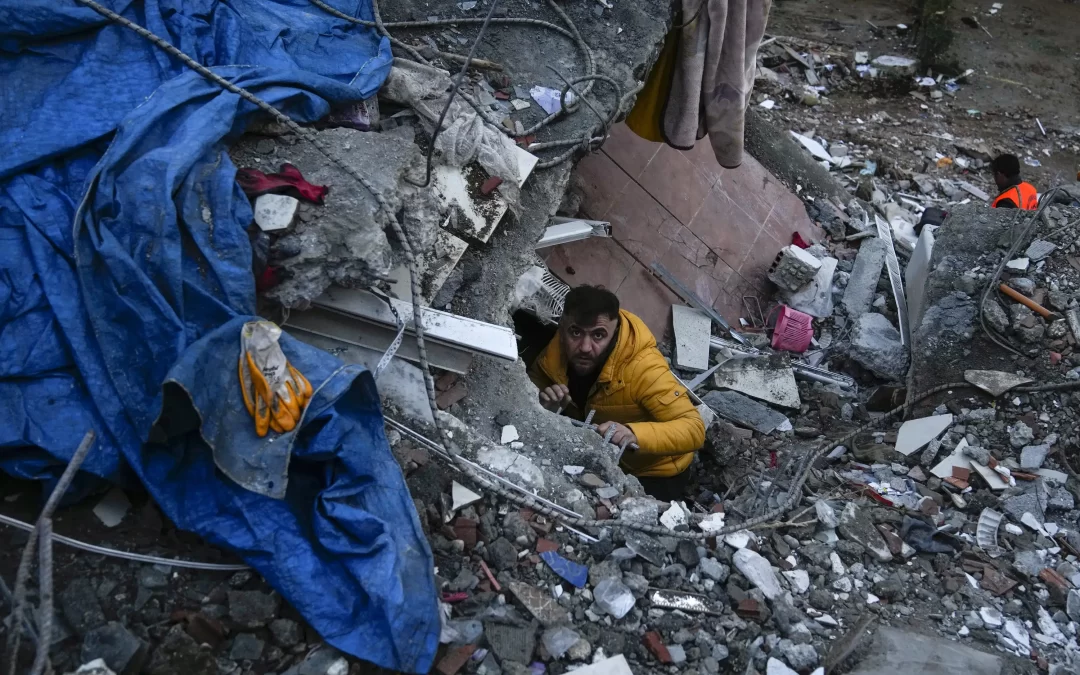On Monday, a 7.8 magnitude earthquake rocked Turkey and Syria, leaving thousands of people dead and injured in its wake. The devastation of this natural disaster has left many wondering what happened and why it was so devastating. This article provides a summary of the research on the earthquake, including what happened, what type of earthquake it was, and why it was so destructive.
The quake hit at a depth of 11 miles (18 kilometers) and was centered in southern Turkey, near the northern border of Syria, according to the U.S. Geological Survey. Many aftershocks have rocked the area since the initial quake, with 13 significant aftershocks of magnitude 5 or greater in the first 11 hours. Scientists are still studying whether a magnitude 7.5 quake that hit nine hours after the main shock is an aftershock.
The earthquake was a strike-slip quake, where two tectonic plates slide past each other horizontally, instead of moving up and down. This type of quake occurred in a seismically active area known as the East Anatolian fault zone, which has produced damaging earthquakes in the past.
The earthquake was powerful and located near populated areas, making it more devastating. Building collapses were reported in cities including Diyarbakir, Turkey, and Aleppo, Syria. Rescue efforts were also hampered by freezing temperatures and traffic jams from residents trying to leave quake-stricken areas.
This earthquake is a tragic reminder of the power of nature and the destruction it can cause. Our thoughts are with those affected by this tragedy.
Source: apnews.com
